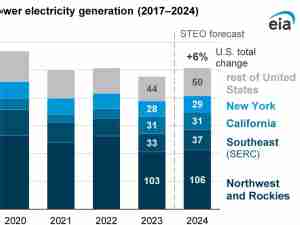Oil managed to push higher even after the U.S. went ahead with a planned tariff increase on Chinese goods, as rising tensions in Iran and elsewhere kept the supply outlook tight.
Futures in New York erased a gain shortly after the increase in levies but then climbed again. China said it would be forced to retaliate after U.S. tariffs on $200 billion of its imports were lifted to 25 percent from 10 percent. In a sign that supply could be tighter than expected, Iran’s oil shipments have tumbled this month with not a single ship seen leaving the nation’s oil terminals for foreign ports, according to tanker tracking data compiled by Bloomberg.
Oil has swung between gains and losses this week as investors tried to assess if there was still a chance for a U.S.-China trade deal after the White House said it planned to raise tariffs. Rising tension between Washington and Tehran, Russia’s crude contamination crisis and the likelihood of output from Venezuela continuing to drop are pointing toward a tighter supply situation.
It would be “very bearish for oil prices if the talks break up tomorrow without any concrete progress,” said Jeffrey Halley, a senior market analyst at Oanda Asia Pacific Ltd. in Singapore. “We don’t see a wholesale run for the exits because there is still this hope something will come from the talks tomorrow.”
West Texas Intermediate crude for June delivery rose 48 cents, or 0.8 percent, to $62.08 a barrel on the New York Mercantile Exchange at 7:40 a.m. in Singapore after climbing as much as 1.4% earlier. The contract is up 0.4 percent since May 3, poised for the first weekly gain in three weeks.
Brent for July settlement rose 43 cents, or 0.6%, to $70.75 a barrel on the London-based ICE Futures Europe exchange after closing little changed on Thursday. The global benchmark contract is trading at $8.53 premium to WTI.
While the trade talks ended without drama on Thursday, the ball is now in China’s court as negotiations are set to resume in Washington on Friday. The Asian nation hopes it can resolve issues with the U.S. through cooperation and negotiation, the country’s Commerce Ministry said in a statement after the tariff hike. A gauge of Asian stocks and the Bloomberg Commodity Index held onto modest gains.
As well as Iran and Venezuela, there have been unexpected disruptions in Russia and Nigeria, and it’s still uncertain to what extent Saudi Arabia will increase its production. The tight supply situation is being reflected in Brent’s three-month oil timespread, which is at the widest backwardation—where the forward price is lower than the prompt price—in almost five years.
There are underlying supply issues because of Iran and Venezuela, but at the moment the market is focused on the U.S.-China trade talks, Daniel Hynes, a senior commodity strategist at ANZ Banking Group Ltd. in Sydney, said before the tariff increase.








